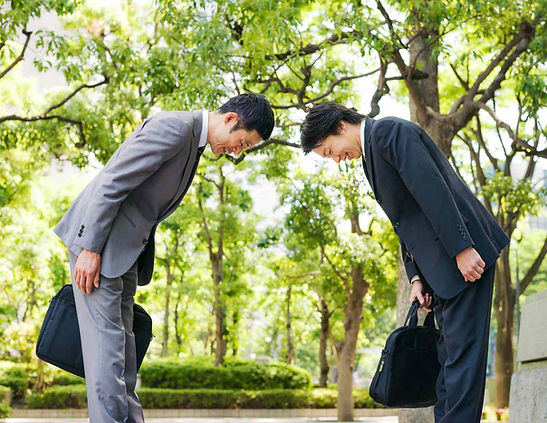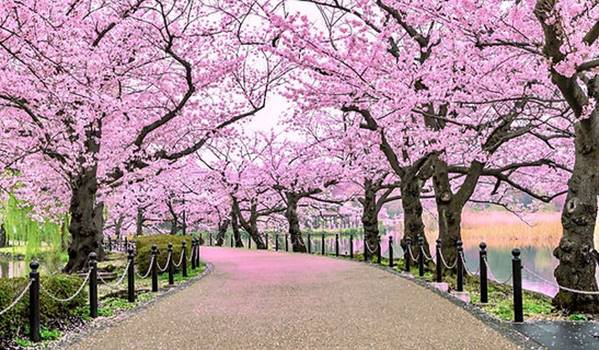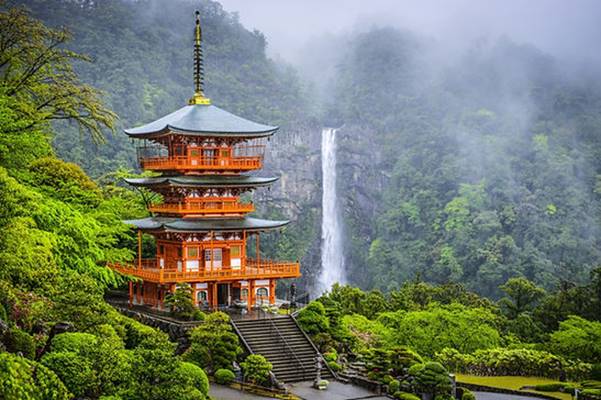
Japan: A Disciplined Humane Society Worth Emulating
By Dr Sharlin Ahmed

(Dr Sharlin Ahmed is a globe traveler. Walking in the footsteps of Ibn Battuta, Ibn Jubayr, Ibn Jubayr, Zheng He, and Marco Polo, she has traveled almost the combined mileage of the four best-known tourists of the past. Ibn Battuta traveled more than any other explorer in pre-modern history, surpassing Zheng He with 31,000 miles, Ibn Jubayr with 70,000 miles, and Marco Polo with 24,000 km. His total distance traveled was approximately 117,000 km (73,000 mi) (15,000 mi). The difference is the mode of travel. Most of her voyages are by air, sea, and motor vehicle. While the four traveled alone, she took her family with her. She is a retired professor of biology who taught at a prestigious university in the United States. Born to Bangladeshi parents in Zambia, she migrated with her husband, who is of Indian origin and a cardiologist, to the United States to raise a family and make them global citizens. Recently, the family visited Japan and discovered a new world embedded in genuine humanity and humility. It was a unique experience for the family. Japan offers more than Toyotas and Nissans. It provides a human style of life that ensures dignity for all. Please take a look at her travelogue.)
I thought I would write about my two-week trip to Japan from 28 May to 11 June 2023. We visited Tokyo for a week and Kyoto for another week. What an amazing trip that was—like none other that we have taken to date (and we travel far and wide every year), hence my reason to write about it.
The overall take from the trip was that this was an isolated pocket of humanity that I never thought still existed on this earth! I cannot speak enough about how kind the people are. Throughout the stay, we never encountered a Japanese person who was not civil, kind, helpful, humble, and selfless! This is not something I can say about any other place that we have visited – not to say these people don’t exist outside of this culture, but they are not all universally that way in any given nation.
The overall take of the Japanese people is that of what every culture/religion hopes to achieve – a universal selfless sense of community and its betterment on a level of selflessness unseen in our species as a whole. In our first world in the USA and the UK, the resources are aplenty but for the individual comforts and privileges. We pay taxes and hope the government will care for the rest of our community. Unfortunately, that is an entirely false sense of comfort in managing the bigger picture. Political agendas and the fight for popularity for the short term of office take precedence and determine the focus of what we give in the hope of improving our community. Besides that, we focus on all the comforts and privileges we can attain for our self-comfort and improving our existence. The sense of community and lifting others along with ourselves is rare. It is not in our ‘culture’. That was the most significant difference we noticed. In Japan, everyone sacrifices self-comfort for the bigger picture and the entire community’s advancement.
While in Kyoto, we rented an ‘upscale’ Japanese home in an excellent neighborhood to avoid being too uncomfortable from our spoiled lifestyle in the USA. Well, the house was indeed big for Japanese standards!! However, for a family of 5 with 16, 14, and 12-year-olds. We loved the original setup of the place with a living room with a tatami mat floor and floor seating with cushions. All houses have an entrance area for shoes before entering. In the living room was a large TV, but sitting on the floor for long periods was challenging. The kitchen/dining area was small – a lengthwise table with four chairs and two benches. Once seated, there was no space to walk around the table or open the fridge, dishwasher, or oven doors. Within this small place, there were many space-conserving attributes! The pots and pans had easy clip-on removable handles stacked in a small drawer, and two handles universally fit all the pans (ingenious)! The dishwasher was small and deep but adequate for a small, well-stacked load. From the kitchen, there was a bathroom across the hall. It is where the small washer/drier was also – the same machine washed and dried – another space saver! Next to it was a sink, and next to that was a floor space with a shower set up and a door for privacy.
Going upstairs along a very narrow steep staircase was a bedroom immediately to the left – the master bedroom. The floor had tatami mats and 2 Japanese floor mattresses. There was a floor desk with a cushion for a chair and a space for a closet. Going out of the main bedroom straight ahead was the bathroom – tiny, yet adequate, with a cubicle for the shower and a sink just outside. The toilet was in a separate little room outside the bathroom with a foldable door – the size of the bathroom in a plane.
Every toilet in Japan – whether a restaurant or a house – is high-tech, with heated seats and automated self-hygiene amenities on the bowl. This toilet had a water-efficient setup with a slow-running tap over the toilet tank for washing hands. The little sink directly drained into the toilet tank for flushing. Next to this was the 2nd bedroom - again with tatami mat floors and just enough room for 2 Japanese floor mattresses. The 3rd bedroom was downstairs next to the entrance – the only room with a bed!
There were notices in the house to keep the windows closed so as not to disturb neighbors with noise! The houses were very close, so everyone was always attentive to not inconveniencing their neighbors. Another unique trait is a selfless sense of community.
Every neighborhood had a ‘seven eleven’ type of convenience store within walking distance. They were small but adequately stocked with various quality necessities – from groceries to toiletries to cleaning supplies. No one ever needed to drive to a major grocery store with such conveniences in every neighborhood.

We noticed children – as young as age 4 to 10 – walking to and from school in uniform, even as it was getting dark. That is how safe the communities are! There are schools in every neighborhood to make sure education is accessible to every child within walking distance from their homes. In the schools, EVERY child has to do an hour of cleaning - no matter the parents’ social status (including ministers’ children). The schools do not have janitors! The kids take care of their environments, from toilets to classrooms to lunchrooms, with supervision from their dedicated teachers! What better way to teach a sense of community in an atmosphere of equity and inclusivity – so far from the meaning DEI has become in the Western world!
Japanese cities are the cleanest we have ever seen in any country during our travels. The streets, markets, alleys, and neighborhoods are spotless, without a shred of trash anywhere. You will be astounded to hear that there are NO trash cans anywhere in sight either! Everyone carries a little plastic bag to discard any waste they may have generated in their travels around the cities. There is no shred of trash in the busy food markets that are hustling and bustling with people. The culture is that when going to the food stands to purchase food, it must be eaten at that particular stand. They have trash cans hidden behind the counters, and one may discard their trash there. Walking and eating is rude, so NO ONE does that. This also ensures no garbage is generated on the go and food is enjoyed peacefully. It is another cultural exercise that benefits the community.
The sidewalks in Japan have strips of raised concrete lines that lead to the corner traffic lights. They are highlighted in yellow. We later found out that those were in place to help blind people navigate the streets safely and to guide them to the traffic lights. There are vending machines for snacks, drinks, and even food like Wagyu beef and other entrees at almost every street corner and every mall.
In Tokyo, we walked to a small café for breakfast one morning. The place was so tiny it barely fit 4 to 5 small tables with cramped chairs and stools for seating. The elderly lady making and serving the food had a little kitchen, 5ft x 5ft, with all her ingredients and supplies in that little space. The locals that went there all greeted one another upon entering. One of the regular customers was happy to take our order and translate to the old lady. She made each item with so much love and TASTE – it was truly amazing. We chatted about where we were from, our kids, her family, etc., in broken English and with the help of her other customers. We ended up going there twice more for breakfast and became friends. On our last morning there, sadly, she happened to be closed. Because she lived directly above the café, she saw us, came to the door, and said it was her rest day. We had a card with our heartfelt sentiments and some money we wanted to give her as our appreciation (not a tip) for her hospitality and great food. She took the envelope, and we walked away. Shortly after, she ran along the street to find us and gave the kids a bag of cookies! That said it all for us. After our tour for the day, we returned to our hotel, and the concierge came running to us, bowed, and handed us a gift bag, saying it was from the owner of a restaurant nearby, who really loved our family! She left us a vast variety of Japanese snacks, a bottle of sake, and a handwritten letter telling us how we had to revisit her and how much she loved our family. She took the trouble to have one of the university students, who frequented her café, write that letter for us in English. She is a reason for us to go back!

We traveled by air from Tokyo to Kyoto. When we boarded the plane, we looked outside the window and saw all the ground staff had lined up next to the plane and were bowing to the pilot and passengers and continued bowing until we taxied away. Nowhere else have we ever seen this kind of respect! Once the plane landed at its destination and was taxiing to the gate, every passenger sat belted in their seats even when the aircraft had stopped! They patiently waited for the chime and seatbelt sign to turn off before anyone left their seat to retrieve their carry-ons in the bins above. We looked around and followed suit! In the West (and the rest of the world), we are accustomed to undoing our seatbelts and standing up as soon as the plane stops without waiting for signs, then selfishly and quickly getting our luggage and clogging the isles. Some people race from behind and don’t give the passengers in the front a chance to get into the aisles! You would NEVER see that in Japan!!
At the airports, when the luggage arrived at the carousel, an attendant would turn every suitcase so that the handle was on the top and front so it was easy for the passenger to retrieve it. Not only was the luggage conveniently placed on the belt, but every passenger stood about 3-4 feet away from the belt so as not to crowd it. When someone saw their luggage, they stepped forward to retrieve it and stepped back again quickly – what a wonderful sense of community and respect for others! Two attendants were unwrapping strollers and car seats so the parents with children were not inconvenienced. Again, we have never seen this before in all our travels.
They were polite when we bought anything from any vendor – at a market, store, or food stand. The culture is never to handle money – the money transactions take place on a little plate handed back and forth with both hands with a thankful bow. Once purchased, the vendor comes around the counter, bows, and hands the item/s directly to the buyer. What a beautiful, respectful, polite culture – if we all did this, we would respect our fellow humans more and be less able to treat another human being with anything but dignity!
Bowing in Japan signifies appreciation, respect, remorse, and gratitude. Not to mention showing humility and humbleness. It does not refer to social status as in societies where caste and status are deemed more important than human dignity, and people of ‘lower social status’ are expected to bow to those of a ‘higher social status’. All human beings are created equal! That seems to be the overall theme in Japan – a complete 180 degrees to what most other cultural groups think. The entire socio-economic structure is based on mutual human respect and dignity in Japan. In other countries, the barriers are based on the prestige of occupation (e.g., the caste system in India), place of residence (e.g., high-end homes vs. slums), type or level of education, income levels, and sometimes ethnic backgrounds. These are some of the categories used to ‘classify’ and ‘isolate’ various groups of human beings. It fails to recognize the sense of community. Japan has kept the Western world’s influence out of their community by ensuring everything is still in Japanese – the road signs, any nationwide notifications, all labels in grocery stores, street signs, etc.… Most foreigners steer clear of such ‘alien’ nations, especially those unwilling to respect the cultures and mannerisms of the countries they visit. While there, we completely embraced the Japanese culture without trying to stick to our spoiled habits. We were very sensitive to and aware of the dos and don’ts and did our homework before going there.
To us, tipping is traditional and expected as a right instead of a reflection of the services provided! The services provided by everyone in their respective businesses we encountered in Japan were stellar, but we had to fight back our urge to tip generously. Trying to tip someone for doing their job is considered disrespectful and an insult! They earn an honest living, and anything above that is unfair, removing their sense of dignity and community. Where and how did we lose those work ethics here?
We were delighted not to see too many uncouth foreigners there. The ones that were there obviously respected the culture and were okay taking the extra time and trouble to patiently move with the community while enjoying their rich culture and history. We hope Japan never conforms to the Western culture and keeps its unique homage to humanity, which is so rare today.

